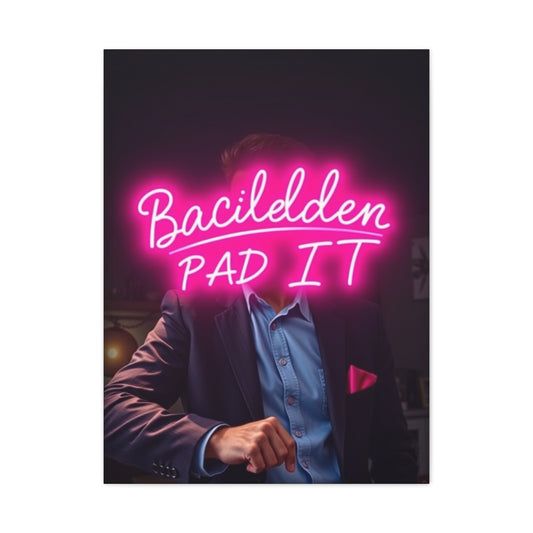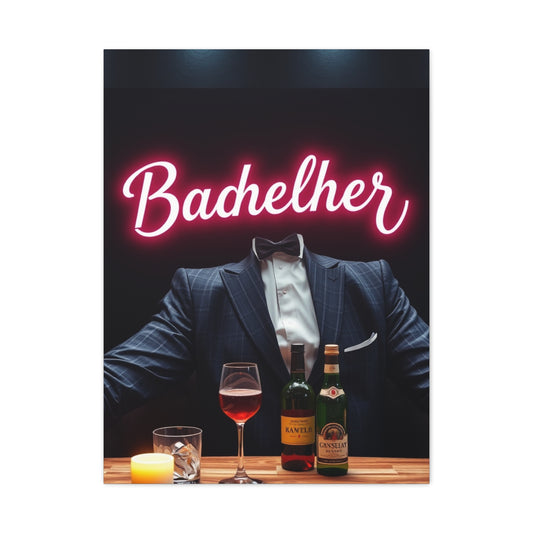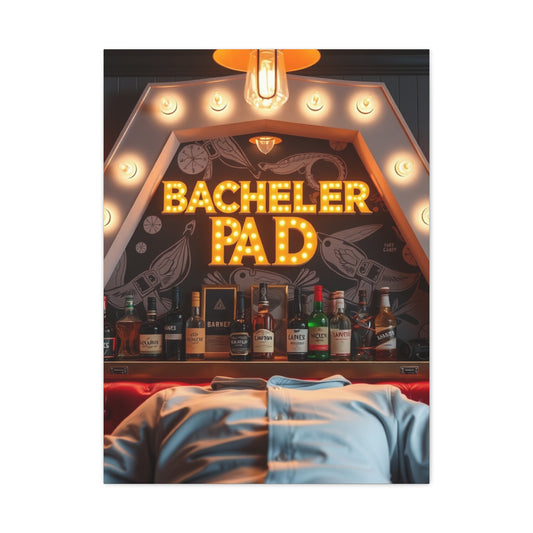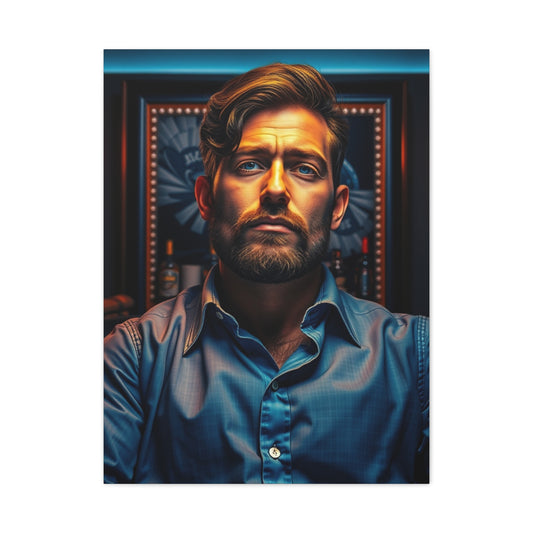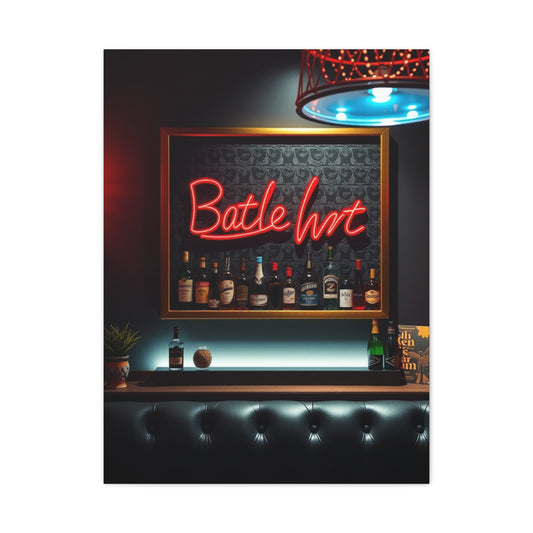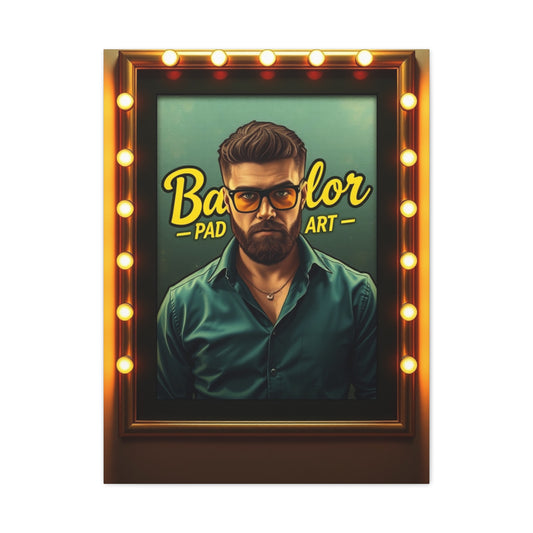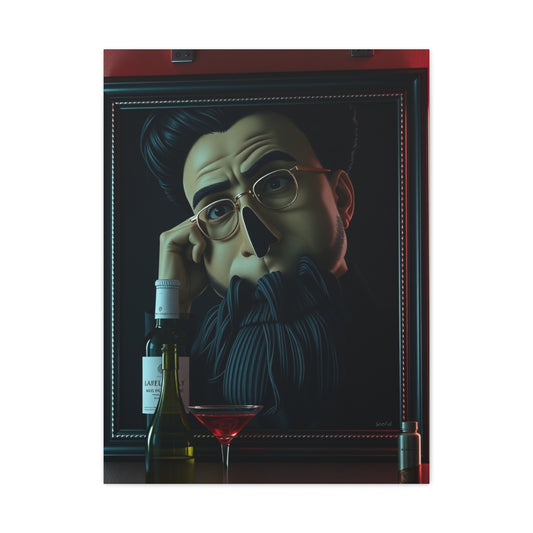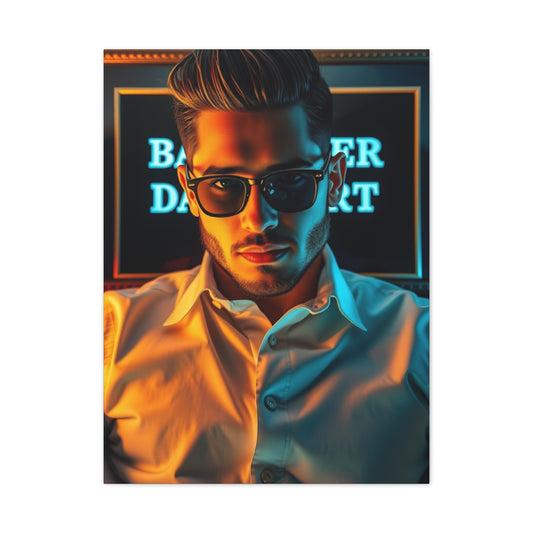-
Bachelor Pad Art Luxury Canvas Wall Art & Canvas Print
Regular price From $141.23 USDRegular priceUnit price per -
Bachelor Pad Art Supreme Canvas Wall Art & Canvas Print
Regular price From $141.23 USDRegular priceUnit price per -
Vision Bachelor Pad Art Art Wall Art & Canvas Print
Regular price From $141.23 USDRegular priceUnit price per -
Elite Bachelor Pad Art Vision Wall Art & Canvas Print
Regular price From $141.23 USDRegular priceUnit price per -
Bachelor Pad Art Supreme Gallery Wall Art & Canvas Print
Regular price From $141.23 USDRegular priceUnit price per -
Bachelor Pad Art Refined Canvas Wall Art & Canvas Print
Regular price From $141.23 USDRegular priceUnit price per -
Masterpiece Bachelor Pad Art Vision Wall Art & Canvas Print
Regular price From $141.23 USDRegular priceUnit price per -
Collection Bachelor Pad Art Art Wall Art & Canvas Print
Regular price From $141.23 USDRegular priceUnit price per -
Supreme Bachelor Pad Art Collection Wall Art & Canvas Print
Regular price From $141.23 USDRegular priceUnit price per
Complete Guide to Bachelor Pad Wall Art: Transform Your Space with Distinctive Photography
Contemporary photographic artwork holds a transformative power capable of redefining domestic environments, especially bachelor living spaces. When thoughtfully curated, photography transcends simple decoration, becoming a narrative tool that communicates identity, taste, and lifestyle. A carefully chosen photograph does more than fill a wall—it establishes an atmosphere, introduces texture and depth, and invites occupants and visitors alike into a curated visual experience. For the modern bachelor seeking a living space that reflects sophistication, individuality, and a sense of purpose, photographic art is a versatile and powerful medium.
The psychological effects of art within residential settings are well-documented. Research in environmental psychology indicates that visual stimuli influence mood, productivity, stress levels, and even cognitive function. By selecting photographic compositions that resonate with personal values and emotional responses, a bachelor can craft a sanctuary that promotes focus, relaxation, and introspection. For instance, minimalist architectural studies often invoke clarity and precision, encouraging mental organization and reflection. Conversely, dynamic urban landscapes imbue spaces with energy and movement, stimulating creativity and engagement. When these psychological considerations are paired with masculine design sensibilities—clean lines, structured layouts, and refined materials—the result is an environment that is not only aesthetically compelling but also emotionally supportive.
The expansive scope of modern photography offers diverse possibilities for personal expression. Architectural photography captures the elegance of human-made structures, emphasizing geometry, light, and shadow, and is particularly effective in bachelor apartments that favor modernist or industrial design. Urban photography, on the other hand, introduces motion, energy, and the narrative of city life, reflecting ambition, adaptability, and cosmopolitan sensibilities. Landscape photography, ranging from serene natural vistas to rugged mountainous terrains, brings a grounding, meditative quality, balancing the often fast-paced or structured aspects of contemporary bachelor life. Additionally, abstract photography, with its emphasis on form, texture, and color interplay, allows for highly personalized interpretation, enabling inhabitants to imbue their spaces with emotion and subtle narrative depth.
Intimate portraiture offers yet another avenue for sophistication, allowing residents to engage with human expression, emotion, and storytelling in their daily environments. Carefully selected portraits can evoke contemplation, empathy, or inspiration, transforming walls into spaces of personal resonance rather than neutral decoration. Furthermore, the integration of monochromatic or muted color palettes enhances versatility, harmonizing photographic art with existing furniture, textiles, and architectural features. Black-and-white images exude timeless elegance, while subdued warm or cool tones can influence the emotional ambiance, creating cozy retreats or tranquil sanctuaries as desired.
Strategic placement is equally critical. The impact of photographic art is maximized when pieces are curated in relation to the room’s function, scale, and focal points. Overhead lighting, accent lamps, or natural sunlight can interact with prints to highlight textures, contrasts, and tonal nuances, further enhancing the viewer’s engagement. Grouped compositions, such as curated gallery walls, allow for thematic exploration, juxtaposing urban dynamics with serene landscapes or architectural minimalism with abstract forms, resulting in multidimensional visual narratives that sustain interest and invite conversation.
Ultimately, contemporary photographic art in bachelor living spaces represents more than decorative appeal—it is an embodiment of lifestyle, personal identity, and curated aesthetic intelligence. By selecting pieces that align with individual temperament, professional pursuits, and emotional needs, a bachelor can transform a simple apartment into a sophisticated, dynamic sanctuary. Each photograph, carefully considered for subject, color, composition, and placement, contributes to a holistic environment that fosters inspiration, comfort, and pride in one’s personal domain.
Through the interplay of psychological influence, thematic curation, and visual sophistication, photographic artwork empowers bachelor residents to create homes that resonate deeply with their personal narrative, transcending conventional notions of decoration and establishing enduring spaces of elegance, contemplation, and individuality.
Fundamental Principles of Masculine Interior Aesthetics
Designing interiors that embody masculine sophistication requires a delicate interplay between practicality, comfort, and visual refinement. Masculine aesthetics are not simply about adhering to dark color palettes, industrial materials, or heavy furniture—they are about creating spaces that reflect confidence, personal narrative, and subtle sophistication. The modern gentleman’s environment balances functionality with aesthetic expression, ensuring that every object, texture, and visual element serves a purpose while contributing to a cohesive design story.
At the heart of masculine interior aesthetics is the principle of balance. Scale and proportion play a crucial role, guiding the placement of furniture, art, and décor elements to achieve harmony without redundancy. Large, statement-making pieces may dominate, but they should coexist with complementary accessories, such as sculptural lighting, textured textiles, or curated photographic works, to prevent overwhelming the senses. Similarly, color harmony is central to masculine interiors; muted tones, earthy hues, and subtle contrasts establish an atmosphere of quiet confidence, while occasional accent colors can punctuate and invigorate the space without sacrificing the overarching mood.
Photography emerges as an essential medium in masculine interior design, offering both versatility and sophistication. Unlike decorative objects that are purely ornamental, photographs have the power to narrate a story, evoke memory, and reflect intellectual or adventurous pursuits. Black-and-white compositions communicate timeless elegance and emotional depth, while vibrant color studies capture energy, urbanity, or modernity. Documentary-style photography, street photography, or travel imagery can infuse spaces with a sense of experience, curiosity, and narrative continuity. The key is curation: selecting works that resonate with personal interests and values, rather than simply following generalized design trends.
The contemporary approach to masculine decorating has shifted from rigid, stereotypical representations toward nuanced, individualized expressions. Traditional ideas of masculinity in interiors—dark wood panels, leather furnishings, and industrial metals—have evolved to embrace flexibility, diversity, and subtlety. Today’s design-conscious man prioritizes authenticity, curating spaces that reflect his identity and lifestyle. A well-chosen photograph of a cityscape or a natural landscape can convey intellectual curiosity, a passion for travel, or a connection to history, while abstract or minimalist works can evoke sophistication and modernity. This evolution allows for greater experimentation, enabling masculine interiors to feel dynamic, layered, and deeply personal.
Texture and material selection also play a pivotal role in masculine interiors. Rich textures—such as leather, wool, matte metals, or natural stone—create a tactile experience that reinforces visual aesthetics. Contrasts between soft and hard surfaces, matte and polished finishes, or warm and cool tones, cultivate an environment that feels deliberate yet inviting. When combined with curated photographic elements, these textures enhance the emotional impact of the space, establishing a dialogue between materiality, imagery, and human experience.
Lighting, often overlooked, is another essential component. Masculine spaces benefit from controlled, layered lighting that highlights key architectural features and emphasizes photographic displays. Ambient lighting provides overall warmth, task lighting supports functional activities, and accent lighting draws attention to selected pieces of art or decorative objects. Through thoughtful illumination, a room achieves depth, drama, and focus, further accentuating the curated photographic narrative.
Ultimately, masculine interior aesthetics are defined not by rigid formulas, but by intentionality, refinement, and authenticity. They offer an arena for personal expression, allowing the modern gentleman to showcase interests, values, and experiences while maintaining a visually coherent environment. Photography, carefully selected textures, harmonious color schemes, and nuanced lighting converge to create spaces that are confident yet comfortable, sophisticated yet welcoming. This thoughtful approach ensures that masculine interiors are living expressions of identity rather than mere visual clichés.
By embracing these principles, designers and homeowners can cultivate interiors that resonate with both functionality and artistry. The result is a space that projects strength, intellect, and taste, while inviting inhabitants and guests alike to engage with its story, aesthetic, and atmosphere—a true reflection of contemporary masculinity in interior design.
Strategic Placement and Compositional Considerations
The placement of artwork within a home is just as important as the artwork itself. Thoughtful positioning transforms ordinary rooms into immersive experiences, where walls act as visual narratives rather than mere barriers. Achieving this effect requires understanding the relationship between the scale of a piece, the proportions of the wall, and the arrangement of furniture. When these elements are balanced, the result is a composition that captivates the eye while maintaining harmony with the surrounding architecture and décor.
Large-format pieces, such as expansive canvases, panoramic photography, or bold metal sculptures, naturally command attention. These works serve as focal anchors around which the rest of the room’s visual elements revolve. For instance, placing a dramatic autumn landscape above a sofa in a living room not only draws the eye but also sets the tone for the space, creating a central point of interest. Similarly, an oversized metal leaf sculpture positioned behind a bed’s headboard or in a grand entryway communicates immediacy and presence, elevating the space without the need for additional decorative elements. Critical to this approach is ensuring adequate breathing room around the artwork. By allowing generous space, the piece is given prominence while remaining visually integrated with its surroundings, preventing the composition from feeling overcrowded or disjointed.
Medium-sized artworks offer a versatile solution for rooms where large pieces might overwhelm. These prints, whether framed photographs, acrylic panels, or textured canvases, adapt well to a variety of layouts and configurations. Their moderate scale allows for creative flexibility: grouping several medium works together can produce dynamic gallery walls that tell a story, each piece complementing its neighbors while maintaining its individual identity. Hallways, offices, and secondary living spaces benefit greatly from this approach, as the arrangement provides visual interest without overpowering the architecture or existing furnishings. Over time, these collections can evolve organically, incorporating new additions or rotating works to reflect shifting tastes and seasonal changes.
Small-scale artworks serve an equally important function by adding detail, texture, and nuance. These pieces excel in intimate environments such as bedrooms, studies, or dressing rooms, where closer viewing distances allow for deeper appreciation of fine details, brushwork, or photographic subtlety. Strategic use of smaller works can fill previously underutilized wall spaces, balancing the composition of a room while contributing layers of visual storytelling. Over time, a collection of small works can grow into a cohesive ensemble, transforming walls into evolving galleries that reflect personal experiences, memories, and artistic exploration.
In addition to scale, careful consideration of compositional flow is essential. Aligning artwork with architectural elements—such as window frames, shelving units, or doorways—ensures that the pieces feel integrated rather than arbitrarily placed. Symmetry can create a sense of order and formality, while asymmetrical arrangements offer dynamic energy and movement. Combining different scales thoughtfully within a single space often produces the most engaging results: a large central piece can anchor the eye, medium-sized works can provide rhythm and contrast, and small accents can punctuate the composition, leading the viewer’s gaze through the room in a deliberate, satisfying way.
Lighting is another critical consideration. Proper illumination enhances color vibrancy, reveals texture, and accentuates depth. Overhead fixtures, wall-mounted picture lights, or natural sunlight can all be employed strategically to ensure the artwork is seen to its full advantage. Even subtle adjustments, like angling a light to reduce glare or emphasizing shadows, can transform how a piece is perceived and dramatically affect the overall atmosphere of a room.
Ultimately, the thoughtful placement of artwork is a fusion of aesthetic sensibility and practical strategy. Large-scale pieces establish dramatic focal points, medium works provide flexibility and narrative cohesion, and small pieces enrich intimate spaces with detail and personality. By considering scale, spacing, furniture relationships, and lighting, homeowners can craft interiors where artwork is not simply decorative but becomes an integral part of the environment—an immersive expression of style, memory, and seasonal ambiance that resonates long after the first glance.
Color Psychology and Atmospheric Enhancement
When curating photographic artwork for masculine interiors, understanding color psychology is essential. Colors influence human perception, mood, and behavior, making them a powerful tool for shaping the emotional tenor of a room. Thoughtful chromatic choices can enhance atmosphere, complement spatial design, and subtly guide daily experiences, allowing interiors to reflect both aesthetic sophistication and psychological resonance.
Monochromatic schemes, especially those focusing on black-and-white photography, exemplify elegance and intellectual depth. By stripping away color, these compositions emphasize form, contrast, and texture, compelling viewers to engage with the structural and narrative elements of the work. Black-and-white photography carries a timeless quality, often associated with classic portraiture, urban landscapes, and documentary studies. Its restrained palette allows it to function seamlessly within contemplative spaces such as libraries, offices, or private studies. The absence of chromatic distraction directs attention to detail, composition, and emotional nuance, fostering intimate connections between observer and subject. Additionally, monochrome works harmonize with a variety of material textures—leather chairs, wooden surfaces, or concrete walls—reinforcing the sophisticated, grounded feel of masculine interiors.
Warm color palettes, incorporating shades of brown, terracotta, amber, deep ochre, and muted gold, instill a sense of comfort, stability, and social vitality. These tones create inviting environments that encourage connection and conversation, making them particularly suitable for living areas, dining rooms, and lounges. Photographs featuring autumnal landscapes, sun-drenched architecture, or intimate domestic scenes often naturally incorporate these hues, enhancing the room’s emotional warmth. In masculine design, warm-toned photographic artwork can also balance the inherent gravity of heavier furniture, dark woods, or metal accents, providing a counterpoint that makes spaces feel more approachable while retaining elegance. These colors communicate reliability and groundedness, subtly reflecting the inhabitant’s sense of confidence and hospitality.
Cool color schemes, dominated by blues, grays, greens, and muted neutrals, evoke calm, focus, and mental clarity. Such palettes are particularly effective in spaces designed for concentration or relaxation, such as bedrooms, offices, or meditation areas. Photographs capturing seascapes, mountain vistas, urban skylines, or abstract geometric forms often emphasize these tones, creating a visual and psychological environment conducive to reflection and serenity. Cool hues can also interact with lighting and texture in dynamic ways: metallic finishes, glass elements, and polished surfaces amplify the crisp, refined character of blue- and gray-dominant photographs, reinforcing a contemporary, minimalist aesthetic. These palettes subtly guide the energy of a room, promoting thoughtful engagement and stress reduction, qualities highly valued in masculine interior design.
Another important aspect is color interplay within photographic collections. Coordinating complementary or analogous tones across multiple pieces can unify a gallery wall or a curated series of images. For example, a series of urban architectural photographs in grayscale might be punctuated with a single warm-toned accent photograph, creating visual rhythm while maintaining cohesion. Conversely, a sequence of seascape and landscape images in varying shades of blue and green can enhance continuity and flow, establishing a calming narrative that guides observers through the space.
Moreover, considering natural and artificial lighting is crucial when selecting color schemes. Warm sunlight amplifies earthy tones, intensifying their welcoming qualities, while cooler fluorescent or LED lighting can accentuate blues and grays, enhancing tranquility. Strategic placement ensures that photographic artwork interacts harmoniously with light throughout the day, reinforcing the intended atmosphere and emotional impact.
Ultimately, color psychology in photographic curation extends beyond aesthetics; it serves as a subtle guide to emotional experience. Monochromatic works cultivate contemplation and depth, warm tones foster intimacy and sociability, and cool hues support calmness and focus. By aligning color with both functional purpose and personal sensibility, masculine interiors achieve a sophisticated balance where visual elegance and psychological comfort coexist, transforming rooms into immersive environments that reflect identity, mood, and lifestyle.
Thematic Coherence and Personal Narrative
Developing thematic coherence throughout photographic collections creates unified experiences that tell compelling stories about inhabitant interests, experiences, and aspirations. Rather than randomly accumulating unrelated images, thoughtful curation around specific themes generates powerful emotional resonance and authentic personal expression.
Travel photography offers exceptional opportunities for creating meaningful thematic collections that reflect personal adventures and cultural curiosities. These narratives work particularly well when organized geographically or chronologically, allowing viewers to trace journeys and experiences through visual storytelling. The key to successful travel-themed displays involves balancing iconic destinations with intimate moments, creating collections that feel personal rather than generic.
Architectural photography appeals to individuals drawn to structural beauty, geometric harmony, and urban exploration. These themes work exceptionally well in modern living spaces where clean lines and contemporary furnishings complement photographic subjects. From historic buildings to cutting-edge contemporary structures, architectural themes offer endless variety while maintaining visual coherence through shared subject matter.
Nature and landscape photography provides opportunities to bring organic beauty into urban environments, creating visual escapes that promote tranquility and connection with natural world. These themes work particularly well in spaces where stress relief and relaxation remain priorities, offering daily reminders of natural beauty and seasonal rhythms.
Technical Considerations for Print Quality and Longevity
Investing in high-quality photographic prints ensures that carefully selected artwork maintains its visual impact and emotional resonance over extended periods. Understanding technical aspects of print production, paper selection, and preservation enables informed decisions that protect both aesthetic and financial investments.
Archival printing processes utilizing pigment-based inks and museum-quality papers provide exceptional longevity and color stability when properly displayed and maintained. These professional-grade materials resist fading, yellowing, and deterioration that can compromise lesser-quality reproductions over time. While initial costs may exceed budget alternatives, the long-term value proposition strongly favors quality materials that maintain their appearance and impact for decades.
Framing choices significantly impact both aesthetic presentation and print preservation. Museum-quality matting materials prevent chemical interactions that can cause discoloration or degradation over time, while UV-filtering glazing protects against light damage without compromising visual clarity. Professional framing may represent significant initial investment, but proper presentation dramatically enhances both visual impact and preservation characteristics.
Display location affects print longevity through exposure to light, humidity, and temperature fluctuations. Avoiding direct sunlight, maintaining stable environmental conditions, and positioning artwork away from heat sources helps preserve print quality while maintaining optimal viewing conditions. Regular cleaning and maintenance ensure that accumulated dust and environmental contaminants don't compromise visual clarity or surface integrity.
Budget-Conscious Curation Strategies
Creating impressive photographic collections doesn't require unlimited financial resources when approached strategically. Understanding market dynamics, timing purchases effectively, and prioritizing quality over quantity enables the development of meaningful collections within reasonable budget parameters.
Emerging photographers often offer exceptional quality at accessible price points while building their professional reputations. These artists frequently produce limited editions or unique works that provide both aesthetic value and potential investment appreciation. Building relationships with developing talent creates opportunities for acquiring distinctive pieces while supporting artistic careers.
Seasonal sales and gallery clearances provide opportunities to acquire higher-end pieces at reduced costs. Many galleries and online platforms offer significant discounts during slower periods or when transitioning between exhibitions. Patient collectors who monitor these opportunities can build impressive collections while maintaining budget discipline.
Print-on-demand services offer access to vast photographic libraries without the premium pricing associated with traditional gallery systems. While lacking the exclusivity of limited editions, these services provide high-quality reproductions of exceptional images at fraction of gallery costs. The key involves selecting reputable providers that maintain professional printing standards and offer archival materials.
Digital Integration and Contemporary Display Options
Modern technology offers innovative approaches to displaying and rotating photographic collections through digital frames and projection systems. These contemporary solutions provide flexibility and variety while accommodating evolving tastes and seasonal preferences.
High-resolution digital displays now rival traditional print quality while offering unlimited variety through slideshow presentations and remote content updates. Premium digital frames feature museum-quality color reproduction and customizable display schedules that can rotate collections automatically or respond to environmental conditions. These systems work particularly well for individuals who appreciate variety and frequent change in their visual environment.
Projection mapping technologies enable transformation of entire walls into dynamic display surfaces where photographic content can adapt to different moods, occasions, or seasonal preferences. While requiring initial technical setup, these systems offer unparalleled flexibility and dramatic visual impact that traditional static displays cannot match.
Smart home integration allows photographic displays to respond to daily routines, weather conditions, or personal preferences through automated systems that enhance living experiences without requiring manual intervention. These technologies represent the cutting edge of domestic display innovation while maintaining focus on photographic content rather than technological complexity.
Cultural Influences and Artistic Movements
Understanding photographic history and artistic movements enhances appreciation while informing selection decisions that align with personal aesthetic preferences. Different periods and styles offer distinct approaches to visual storytelling and emotional expression.
Documentary photography traditions emphasize authentic storytelling and social commentary, appealing to individuals who value substance and meaning over purely aesthetic considerations. These approaches often incorporate human elements and cultural narratives that provide intellectual engagement alongside visual pleasure. Masters like Henri Cartier-Bresson, Walker Evans, and Dorothea Lange established traditions that continue influencing contemporary practitioners.
Fine art photography prioritizes aesthetic beauty and emotional resonance through careful attention to composition, lighting, and technical execution. These approaches often emphasize visual poetry over literal documentation, creating images that function primarily as artistic expressions rather than informational documents. Contemporary fine art photographers push boundaries through experimental techniques and conceptual approaches that challenge traditional photographic conventions.
Street photography captures spontaneous moments and urban energy, appealing to individuals drawn to authentic human experiences and metropolitan dynamism. These images often incorporate humor, irony, and unexpected juxtapositions that reflect contemporary life's complexity and richness. The immediacy and authenticity of street photography creates powerful connections with viewers who appreciate genuine moments over staged compositions.
Seasonal Adaptability and Collection Evolution
Developing photographic collections that adapt to seasonal changes and evolving personal tastes ensures that living spaces remain fresh and engaging throughout the year. Strategic planning enables smooth transitions that maintain visual coherence while accommodating natural desire for periodic change.
Seasonal rotation systems allow maximum enjoyment of extensive collections while preventing visual stagnation that can occur when identical arrangements remain static for extended periods. These approaches work particularly well with medium and smaller-scale works that can be easily stored and exchanged according to weather patterns, holiday seasons, or personal moods.
Modular display systems facilitate easy reconfiguration and expansion as collections grow and personal preferences evolve. Track lighting, adjustable hanging systems, and flexible mounting solutions enable experimentation with different arrangements without requiring permanent installation modifications. These systems prove particularly valuable for individuals who enjoy frequent rearrangement or anticipate collection growth over time.
Investment in storage solutions protects artwork not currently displayed while maintaining organization that supports efficient rotation and selection. Climate-controlled storage, protective sleeves, and cataloging systems ensure that entire collections remain accessible and well-preserved regardless of current display status.
Professional Installation and Maintenance
Proper installation techniques ensure that valuable photographic artwork remains secure while achieving optimal presentation that maximizes visual impact. Professional installation services provide expertise in handling, positioning, and mounting that protects both artwork and architectural surfaces.
Wall analysis determines appropriate mounting methods based on construction materials, load-bearing capacity, and aesthetic requirements. Different wall types require specific hardware and techniques that ensure secure installation without compromising structural integrity or surface appearance. Professional installers possess tools and experience necessary for achieving museum-quality results while avoiding common mistakes that can damage walls or artwork.
Lighting design dramatically affects photographic presentation through careful control of illumination angle, intensity, and color temperature. Professional lighting solutions eliminate glare, shadows, and color distortion while creating dramatic effects that enhance visual impact. LED systems offer energy efficiency and longevity while providing precise control over lighting characteristics.
Maintenance protocols ensure that installed artwork retains its appearance and condition over extended periods. Regular cleaning schedules, environmental monitoring, and periodic condition assessments identify potential problems before they compromise artwork integrity. Professional maintenance services provide expertise in handling delicate materials while maintaining presentation standards.
Community Building and Shared Appreciation
Developing photographic collections creates opportunities for building communities around shared aesthetic interests and cultural appreciation. These connections enhance personal enjoyment while providing ongoing education and inspiration through exposure to different perspectives and approaches.
Local photography societies and camera clubs offer opportunities to meet practitioners, learn about techniques, and discover emerging talent. These organizations frequently organize exhibitions, workshops, and social events that provide access to photographic communities while supporting local artistic development. Participation in these groups often leads to acquisition opportunities and lasting friendships based on shared interests.
Gallery openings and museum events provide exposure to professional curatorial approaches and contemporary trends while offering opportunities to meet artists and other collectors. These social environments facilitate learning about photographic history, techniques, and market dynamics while building relationships that enhance long-term collecting strategies.
Online communities dedicated to photography appreciation offer global perspectives and continuous learning opportunities that supplement local resources. These platforms facilitate sharing of collections, discussion of aesthetic preferences, and discovery of new artists and approaches. Virtual exhibitions and online sales platforms provide access to international talent and unique pieces that might not be available through local channels.
Investment Considerations and Market Dynamics
Understanding photographic art markets enables informed decisions about acquisitions that balance aesthetic preferences with potential financial considerations. While artistic appreciation should remain primary motivation, awareness of market dynamics can inform strategic collecting approaches.
Limited edition prints typically maintain value better than unlimited reproductions due to scarcity and exclusivity factors that appeal to collectors. Understanding edition sizes, artist reputations, and market demand helps identify pieces with potential appreciation while avoiding speculative purchases that prioritize investment over genuine appreciation.
Artist career trajectories influence long-term value propositions through reputation development, institutional recognition, and market acceptance. Supporting emerging artists with strong portfolios and exhibition records can provide both aesthetic satisfaction and potential financial rewards as careers develop and recognition increases.
Authentication and provenance documentation protect investment value through verification of authenticity and ownership history. Maintaining detailed records, certificates, and purchase documentation ensures that collections retain their integrity and value regardless of future disposition decisions.
Psychological Benefits and Lifestyle Enhancement
Living with carefully selected photographic artwork provides psychological benefits that extend beyond simple aesthetic pleasure. These positive effects contribute to overall well-being and life satisfaction through daily exposure to meaningful visual experiences.
Stress reduction occurs through contemplation of beautiful images that provide mental escape and emotional respite from daily pressures. Natural landscapes, abstract compositions, and harmonious arrangements create calming effects that support relaxation and mental restoration. These benefits accumulate over time through repeated exposure to positive visual stimuli.
Inspiration and motivation emerge through exposure to images that represent personal aspirations, achievements, or interests. Travel photography can inspire future adventures, while architectural studies might encourage career goals or creative projects. The daily presence of inspirational imagery reinforces positive thinking and goal orientation.
Social connection develops through shared appreciation of displayed artwork during gatherings and conversations. Interesting photographic collections naturally generate discussion and provide insight into host personality and interests. These social benefits enhance relationships while creating memorable experiences for both residents and visitors.
Future Trends and Technological Evolution
Emerging technologies and cultural trends continue shaping photographic art creation, distribution, and display methods. Understanding these developments enables informed decisions about collection building and display strategies that remain relevant as markets and technologies evolve.
Artificial intelligence influences both photographic creation and curation through automated enhancement, style analysis, and recommendation systems. These technologies offer new tools for discovering compatible artwork while raising questions about authenticity and artistic value in digitally enhanced or generated images.
Virtual and augmented reality technologies provide new possibilities for experiencing photographic content through immersive presentations that transcend traditional display limitations. These emerging platforms may eventually supplement or replace conventional wall-mounted displays while creating entirely new categories of photographic art designed specifically for virtual environments.
Sustainability concerns influence both production methods and collecting approaches as environmental consciousness shapes consumer preferences. Eco-friendly printing materials, carbon-neutral shipping, and sustainable framing options become increasingly important factors in collection decisions as environmental awareness grows.
Comprehensive Implementation Strategy
Successfully transforming living spaces through photographic artwork requires systematic approaches that balance immediate impact with long-term satisfaction. Effective implementation strategies consider budget constraints, spatial limitations, and personal preferences while maintaining flexibility for future evolution.
Initial assessment of existing spaces identifies opportunities and constraints that influence selection and placement decisions. Room dimensions, architectural features, lighting conditions, and traffic patterns all affect optimal artwork choices and positioning. Professional space planning can maximize impact while avoiding common mistakes that compromise either functionality or aesthetics.
Phased acquisition strategies enable collection building within budget parameters while maintaining quality standards and thematic coherence. Starting with key anchor pieces and gradually adding complementary works allows for organic development that responds to changing preferences and financial circumstances. This approach prevents hasty decisions while building collections that reflect genuine personal evolution.
Documentation and cataloging systems track collection development while supporting maintenance, insurance, and eventual disposition decisions. Digital records including purchase details, condition assessments, and display history provide valuable references for ongoing collection management while protecting investment value.
Conclusion
The transformative journey of personalizing bachelor living spaces through distinguished photographic artwork represents far more than mere interior decoration. This comprehensive approach to environmental enhancement creates sanctuaries that authentically reflect individual personality, aspirations, and aesthetic sensibilities while fostering daily inspiration and emotional well-being.
Throughout this extensive exploration, we have examined the multifaceted nature of creating sophisticated masculine environments that balance artistic expression with practical functionality. The careful selection and strategic placement of photographic artwork serves as both personal statement and daily companion, enriching routine experiences while providing constant sources of contemplation and conversation.
The technical considerations surrounding print quality, framing standards, and preservation methods ensure that initial investments continue delivering aesthetic and emotional returns for decades. Understanding these professional standards enables informed decisions that protect both financial investments and personal satisfaction through proper care and presentation of carefully chosen artworks.
The psychological benefits derived from living among meaningful visual narratives extend beyond simple aesthetic pleasure, contributing to stress reduction, inspiration, and social connection. These positive effects accumulate through daily exposure to carefully curated collections that speak to personal interests, experiences, and aspirations while creating welcoming environments for both residents and guests.
Contemporary technological advances offer exciting possibilities for dynamic display systems and digital integration that complement rather than replace traditional photographic presentations. These innovations provide flexibility and variety while maintaining focus on artistic content and emotional resonance that defines exceptional photographic collections.
The community aspects of photographic appreciation create opportunities for ongoing learning, relationship building, and cultural engagement that enhance personal growth while supporting artistic communities. These connections provide lasting value that extends beyond individual collection development into broader cultural participation and aesthetic education.
Strategic approaches to budget management, collection building, and market awareness enable the development of impressive photographic collections within reasonable financial parameters while maintaining quality standards and authentic personal expression. The long-term perspective proves essential for building collections that continue providing satisfaction and inspiration throughout changing life circumstances.
Understanding historical context, artistic movements, and cultural influences enhances appreciation while informing selection decisions that create coherent collections with lasting relevance. This educational component adds intellectual depth to aesthetic experiences while providing frameworks for continued learning and collection development.
The investment potential of carefully selected photographic artwork provides additional motivation for quality-focused acquisition strategies while supporting emerging artists and contributing to vibrant photographic communities. These financial considerations complement rather than override aesthetic preferences, creating balanced approaches that serve multiple objectives simultaneously.
Looking toward future developments in photographic art, technology, and cultural trends enables informed decisions that remain relevant as markets and preferences continue evolving. This forward-thinking perspective ensures that current investments continue providing value while positioning collections for continued growth and adaptation.
The ultimate goal of creating distinctive bachelor living environments through photographic artwork lies in establishing spaces that genuinely reflect inhabitant identity while providing daily enrichment and inspiration. These personalized sanctuaries become refuges from external pressures while serving as launching points for continued growth, creativity, and authentic self-expression.
The journey of developing photographic collections rewards patience, education, and thoughtful curation while providing ongoing opportunities for discovery and refinement. Each carefully chosen piece contributes to evolving narratives that reflect personal development and changing perspectives while maintaining coherent aesthetic visions.
Success in this endeavor requires balancing multiple considerations including aesthetic preferences, technical quality, budget constraints, and long-term goals while remaining open to unexpected discoveries and evolving tastes. The resulting collections become extensions of personality that enhance daily experiences while creating lasting legacies of refined taste and cultural appreciation.

